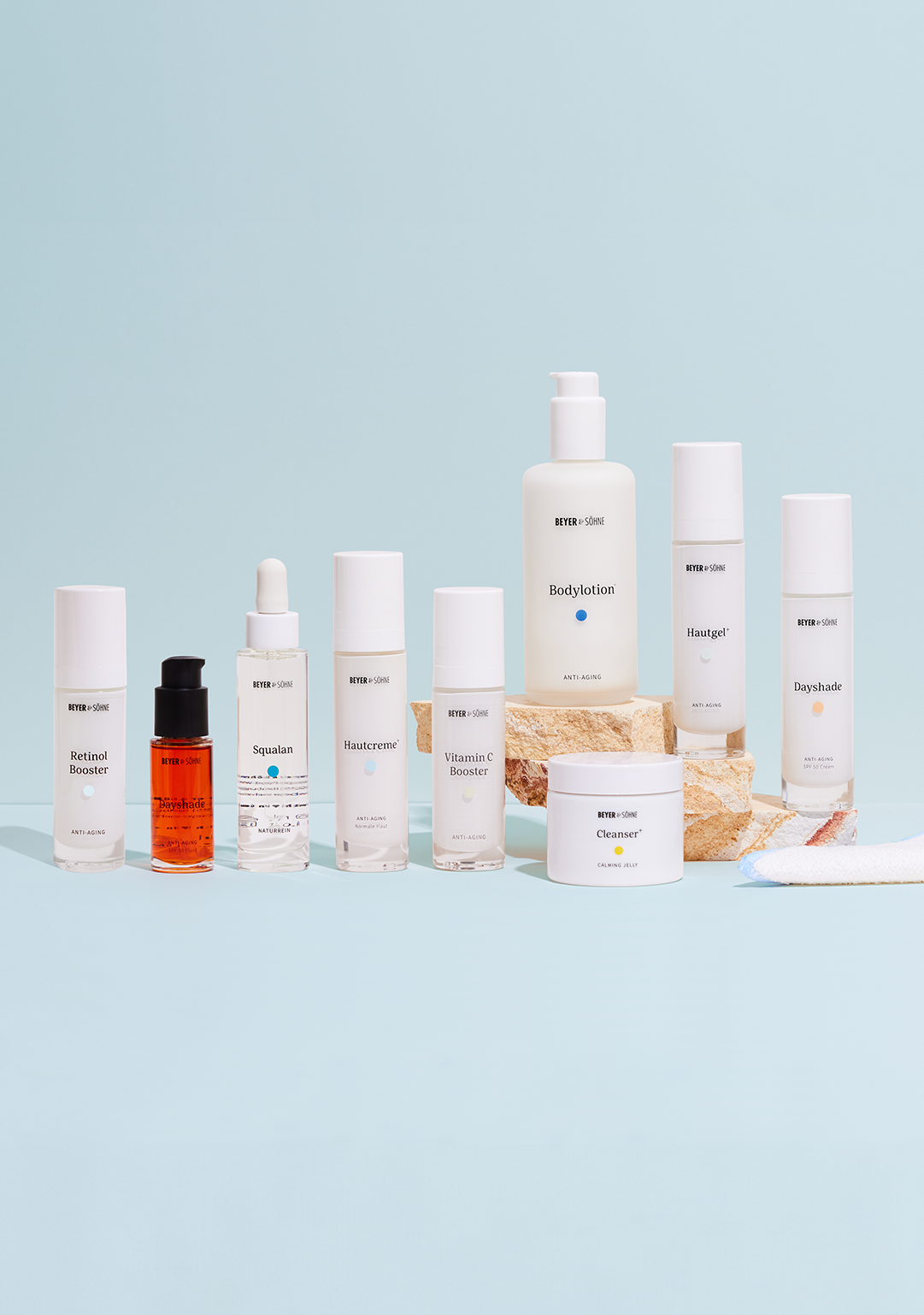Ceramides and Skin Health
What Are Ceramides? How They Make Your Skin Strong and Beautiful
Ceramides remain a well-kept secret in skincare. They ensure that our skin barrier functions properly, keeping the skin protected and well-hydrated. This forms the foundation for beautiful, healthy skin. That's why ceramides are becoming a trend in anti-aging cosmetics. But they do much more than just prevent wrinkles. Here, you'll learn how a cream with ceramides can strengthen your skin and why our skin cream contains 5 different ceramides.

Nico Beyer
August 2024
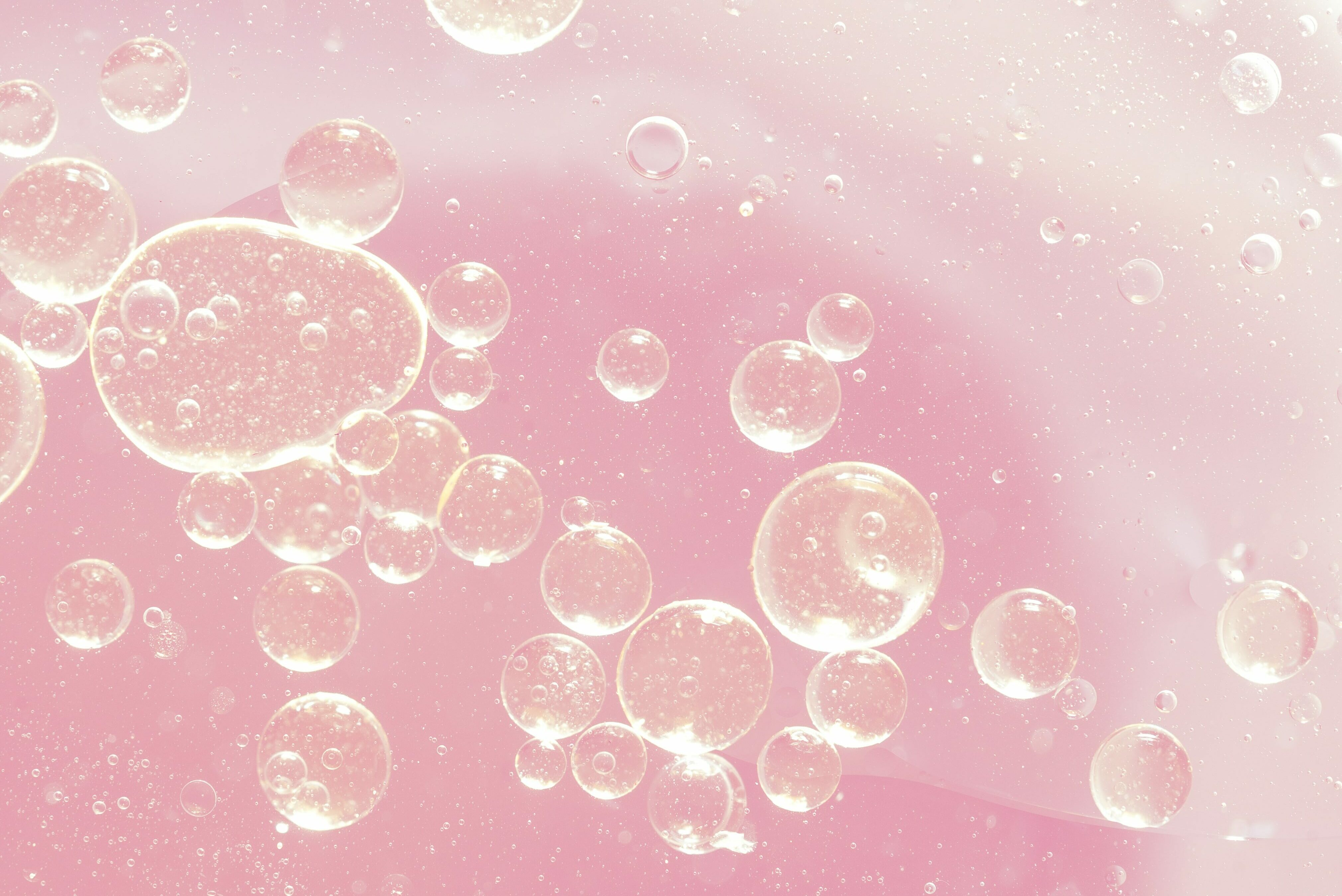
Table of Contents
What are Ceramides?
What Types of Ceramides Are There?
Ceramides – Strong Skin Barrier, Healthy Skin
How does ceramide synthesis work?
How Do Ceramides Work?
Which Skin Needs Ceramides?
Fighting Skin Aging with Ceramides
Ceramides for Dry Skin
Ceramides in Treating Skin Conditions
Ceramides in Shampoos
Ceramide Cream: How It Works Best in Your Skin
How to Recognize a Ceramide Cream
How to Boost Your Body's Ceramide Production
Beyer & Söhne: Comprehensive Ceramide Structure
Lastly: Combine Ceramides With Vitamins
Conclusion
What are Ceramides?
Simply put, ceramides are special fats that build our skin barrier. They are the main component of the top layer of our skin: the
stratum corneum
(
horny layer
).
Our stratum corneum consists of a mix of water and lipids. This mixture binds many small, dead skin cells (corneocytes) together, creating a protective barrier:
our skin barrier
.
Ceramides constitute 60% of the lipids in our stratum corneum. Our human stratum corneum contains at least
nine different types of ceramides
.
In cosmetics, Ceramide 3, listed as Ceramide NP, is most commonly found. This ceramide has the largest quantity of all the ceramides in our skin. Ceramides are naturally present in our skin and are skin-identical. Therefore, they are completely compatible in skincare and also suitable for natural cosmetics.
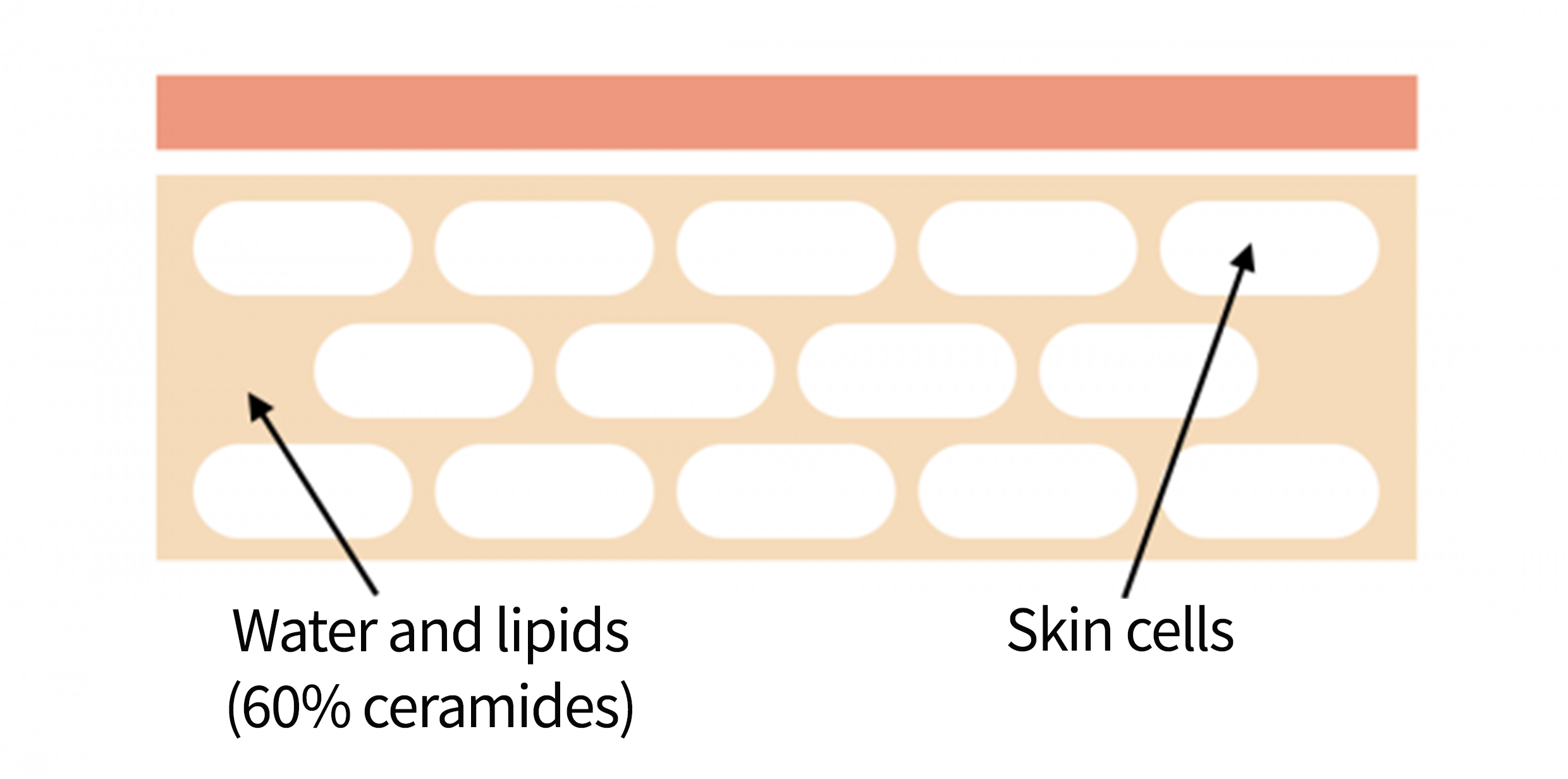
The Skin Barrier: Skin cells are held together by a liquid-crystalline water-lipid mixture.
What Types of Ceramides Are There?
This list includes all
9 types of ceramides
found in our skin. The letters following the ceramides represent their specific names, which you can also find on the INCI lists of cosmetic products. These names are derived from the unique structure of each ceramide. For example, NP stands for
N-Stearoyl-Phytosphingosine
.
Ceramide 1 – EOS
Ceramide 2 – NS
Ceramide 3 – NP
Ceramide 4 – EOH
Ceramide 5 – AS
Ceramide 6 – AP
Ceramide 7 – AH
Ceramide 8 – NH
Ceramide 9 – EOP
New to skincare products are also modified ceramides. The ingredient
Ceramide BP
, or
isostearoyl phytosphingosine
, represents a new type of ceramide. To fulfill new skincare functions, skin-identical ceramides are modified.
Ceramide BP consists of branched fatty acids primarily found in the vernix caseosa (cheesy varnish) of infants. This unique protective layer shields an infant's skin from dehydration and bacterial infections. We use Ceramide BP in our Hautcreme+ for dry skin.
Ceramides – Strong Skin Barrier, Healthy Skin
Our upper skin layers are also known as the epidermis. Its primary function is the
continuous renewal of our skin barrier.
The skin barrier ensures that no pollutants penetrate the skin and that the skin remains well-moisturized. This is the key to healthy and thus beautiful skin. Also, to youthful skin. When the skin is protected from drying out,
fewer wrinkles
form.
Therefore, the lower layers of the epidermis are constantly producing new ceramides, with the body knowing the ideal composition of the various types of ceramides.
By the way, the skin's protective barrier is a biomembrane. These membranes are found throughout our entire body. Every cell is surrounded by a membrane. All membranes in the body are composed of two membrane lipids:
phospholipids
and
sphingolipids
. These substances are also responsible for our body's ability to produce ceramides.
How does ceramide synthesis work?
The synthesis of ceramides in the epidermis is very complex. We do not want to get lost in biochemical details but rather note generally: All ceramides are formed from membrane lipids.
These are
phospholipids
and
sphingolipids
. Remember:
sphingolipids
are the special fats that include ceramides. Additionally, there are
sphingosines
: these are amino alcohols that are also a major component of ceramides.
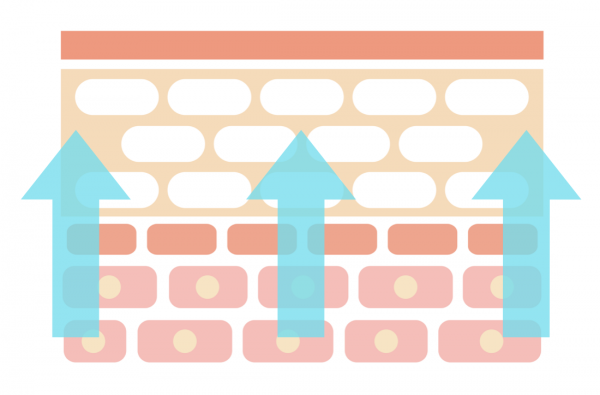
Ceramide synthesis occurs in the deeper layers of the epidermis.
A good skin cream always contains ceramides. However, the best skin cream should also
stimulate
ceramide synthesis
. We will discuss later how a cream can support ceramide synthesis. First, let's focus on the effects of cosmetics containing ceramides in general.
Phospholips in der Hautcreme+
In biochemistry, it's fascinating how everything is interconnected. To make our Hautcreme+, we use phosphatidylcholine (PC), the main component of the body's own cell membranes. This allows us to create a cream base that is skin-identical and particularly compatible. Intriguingly, phosphatidylcholine also stimulates ceramide synthesis.
How Do Ceramides Work?
Ceramides are the fundamental building blocks of our skin barrier. Creams that contain ceramides or stimulate ceramide synthesis
enhance the barrier function of the skin
.
Specifically, this means
more moisture and more protection
. Providing ceramides reduces the skin's natural water loss, also known as TEWL (Trans Epidermal Water Loss). At the same time, it prevents exogenous irritants from penetrating the skin. Protection against bacteria, viruses, or fungi is particularly important for damaged skin and skin diseases.
Which Skin Needs Ceramides?
Since ceramides are a natural part of the skin, every type of skin benefits from a ceramide cream. Generally, the more stressed or needy the skin, the greater the effect.
Ceramides are particularly suitable as an anti-aging agent, for dry skin, and for skin diseases such as psoriasis, eczema, and atopic dermatitis.
Fighting Skin Aging with Ceramides
There are many effective anti-aging ingredients but ceramides play a crucial role due to their foundational benefits for healthy and beautiful skin. Well-hydrated skin looks more radiant and shows fewer wrinkles.
That's why ceramides have become a secret weapon in anti-aging creams. They can be especially effective in eye care because the more moisture the delicate skin around the eyes retains, the
fewer wrinkles
appear.
Ceramides for Dry Skin
Dry skin can often be traced back to a compromised barrier function. When too much moisture escapes through the membrane in the upper layers of the skin, it becomes dry. This can be caused by various factors, such as damage from excessive cleansing with harsh detergents or a disruption in the body’s natural ceramide synthesis. In either case, cosmetics containing ceramides and ceramide precursors, like
phospholipids
and
sphingolipids
, are beneficial.
Ceramides in Treating Skin Conditions
Ceramides also show promise in treating skin diseases. They enhance the skin's ability to shield itself from external irritants. Studies have indeed shown reduced ceramide levels in the skin of individuals with
eczema
,
dermatoses
, and
psoriasis
.
Cosmetics that aid in rebuilding the skin barrier not only prevent skin diseases but can also diminish the severity of outbreaks. Therefore, maintaining a sufficient supply of ceramides is key to healthy skin.
Here you can read more about how ceramides help with eczema.
Ceramides in Shampoos
Interestingly, ceramides are increasingly found in shampoos. This is actually a great idea, especially for dry scalp. Ceramides seem to bond well with the keratin in hair, making hair look healthier and more beautiful.
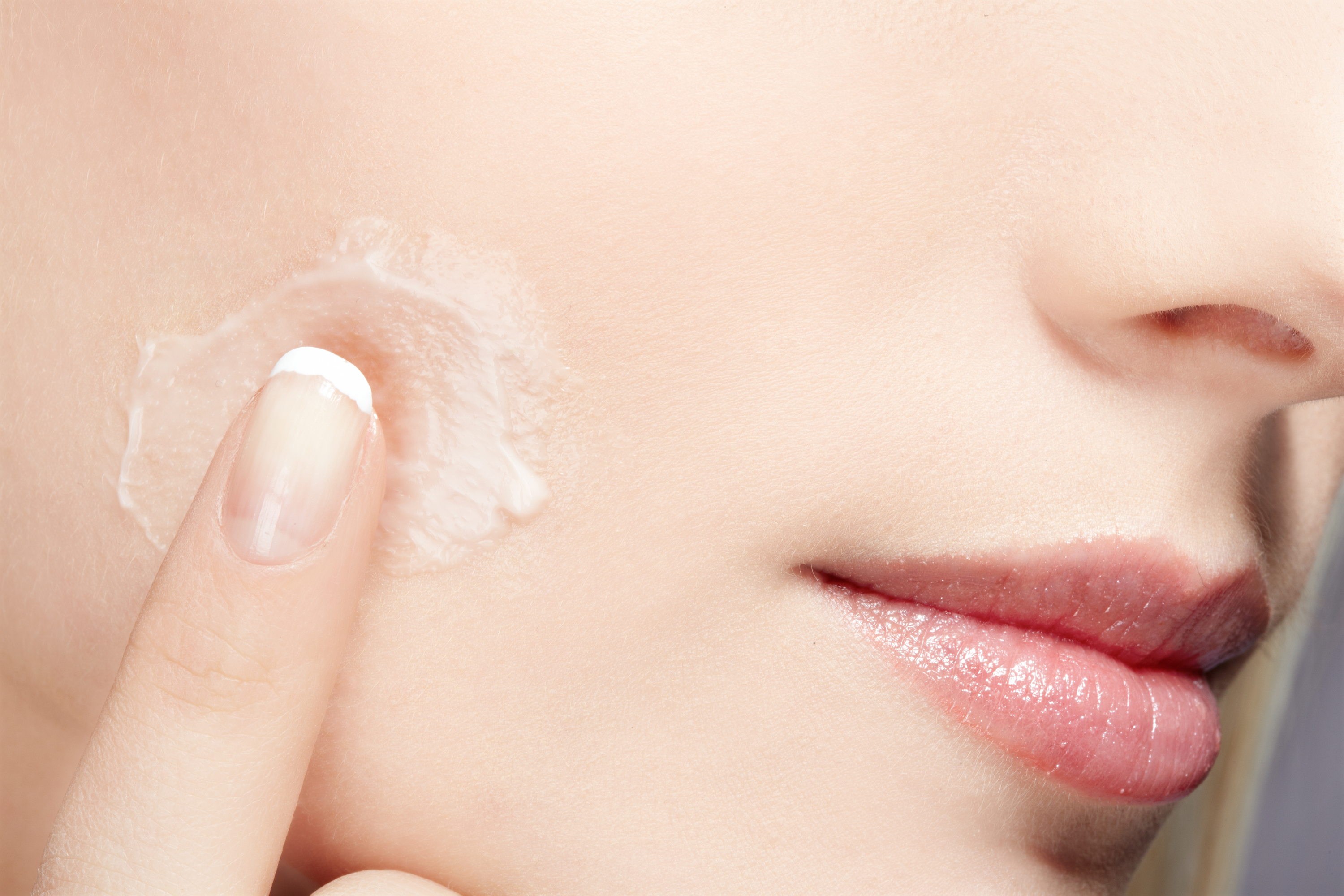
A cream with ceramides ensures that the skin can retain more moisture.
Ceramide Cream: How It Works Best in Your Skin
Effective skincare with ceramides can help in two ways:
1.
It should contain
ceramides as an ingredient
that can integrate directly into the skin barrier.
2.
It should
support the body in forming ceramides
. One way is to supply the skin with ceramide precursors, such as phosphatidylcholine. This phospholipid helps the body synthesize ceramides in various ways.
How to Recognize a Ceramide Cream
Ceramides are easy to spot on an ingredient list. The most commonly used form is simply called c
eramide NP
. Few cosmetics producers choose this path, as ceramides are very complex to manufacture. They are among the most precious raw materials used in cosmetics.
By the way, in our Hautcreme+, we use a mix of 5 ceramides along with additional ceramide precursors.
However, be cautious:
The skin barrier is made up of various ceramides. If a cream contains only one type of ceramide in a high concentration, it could disrupt the ideal mixture. An accumulation of the 'wrong' ceramides has no effect and, in the worst case, could cause damage. It's best to also provide the skin with the necessary precursors so that our body can produce the 'perfect' ceramide mix itself.
How to Boost Your Body's Ceramide Production
To aid the body in producing ceramides, a cream should
contain membrane lipids
. Our favorite ingredient is phosphatidylcholine (PC), which is a major component of every cell membrane in the body. This is why the biochemical effects of this substance are so diverse. It stimulates the synthesis of various ceramides and has long-lasting effects in the skin.
Ceramide Synthesis Through Linoleic Acid
Besides Ceramide 3 (Ceramide NP), Ceramide 1 (EOS) also plays a crucial role in the skin barrier. It is particularly valuable for organizing the different ceramides.
Ceramide 1 can be produced by the skin itself, but this process requires linoleic acid. Linoleic acid cannot be synthesized by the body, which is why our skin cream includes this active ingredient. In the ingredient list, linoleic acid is listed as l
inoleic acid
.
Another effective way to provide the skin with linoleic acid is through phosphatidylcholine (PC). This phospholipid is rich in linoleic acid and can easily transport it into the deeper layers of the skin.
Enzymatically, linoleic acid is produced from PC. This effect is particularly sustainable because a cream with a high PC content creates a depot from which the body can easily draw when needed.
From linoleic acid, a series of other ceramides are produced, such as Ceramide 4 (EOH) and Ceramide 9 (EOP). Incidentally, linoleic acid helps against acne, refines pores, and combats hyperpigmentation.
Ceramide Synthesis Through Sphingosines
Sphingosines are an important component of ceramides. They are amino alcohols that, along with fats, are a major part of ceramides. Therefore, sphingosines can support the skin in forming ceramides.
Sphingosines
are often listed as phytosphingosines on ingredient lists, indicating they are of plant origin.
A particularly effective form is called
tetraacetylphytosphingosine
, one of the longest ingredients we know. This form is highly soluble in cosmetics and therefore works particularly well.
We use
tetraacetylphytosphingosine
in our Hautcreme+ because this ingredient promotes the formation of all ceramides, especially Ceramide 1 (EOS), which is responsible for organizing all the ceramides.
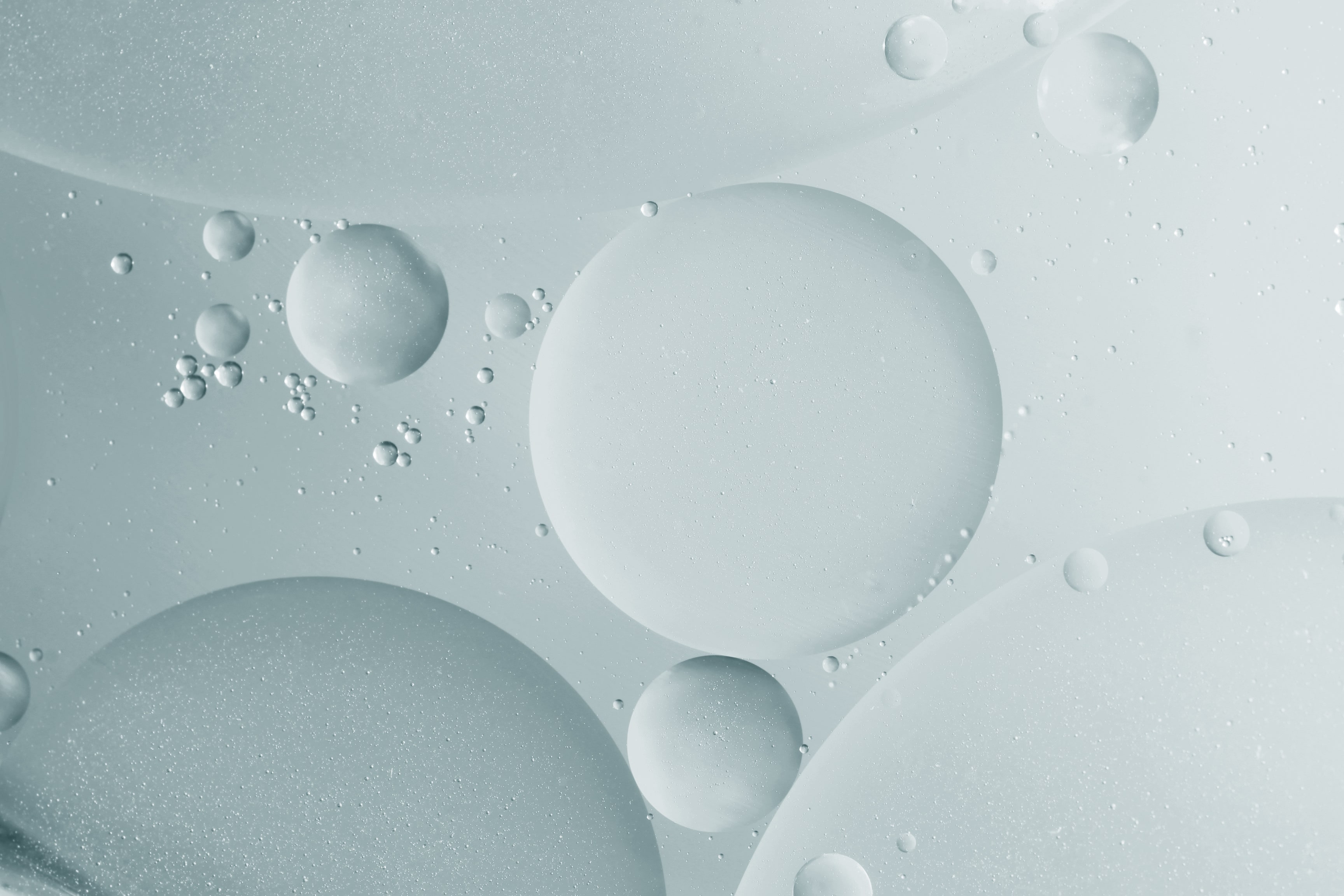
Sphingosines are amino alcohols and, alongside fatty acids, are a major component of ceramides.
Ceramide Synthesis Through Membrane Lipids
As mentioned, PC (phosphatidylcholine) is a particularly prevalent phospholipid with a multitude of functions and effects, including
direct involvement in ceramide synthesis
. When needed, the body converts PC into
sphingomyelin
, from which more ceramides are formed.
But wait, what is
sphingomyelin
? Let's keep it simple.
Sphingomyelin
is both a
sphingolipid
and a
phospholipid
(our two types of membrane lipids), which is why it is also called
sphingophospholipid
. Makes sense, right?
For example, sphingomyelin gives rise to Ceramides 2 and 5, also known as Ceramides NS and AS.
Beyer & Söhne: Comprehensive Ceramide Structure
We are thrilled that ceramides are becoming increasingly popular. Our Hautcreme+ has always contained ceramides and ceramide precursors. Our passion extends so far that we produce Hautcreme+ based on phosphatidylcholine. With a concentration of over 4%, it consists largely of membrane lipids, enabling an
especially comprehensive ceramide structure
to develop in your skin.
Lastly: Combine Ceramides With Vitamins
Ceramides protect your skin, so it's essential to protect your ceramides as well. Fats are susceptible to
lipid peroxidation
, which is damage caused by free radicals. These unstable molecules cause significant harm in the body as they search for reaction partners. Antioxidants can 'capture' these free radicals. Therefore, ensure that your cream also contains vitamins and antioxidants.
One of the best-known antioxidants is Vitamin C. Vitamin A (Retinol) and Vitamin E also prevent lipid peroxidation. Potent antioxidants found in nature include resveratrol and astaxanthin, which protect your membranes and thus the ceramides in your skin.
Conclusion
As a fundamental part of the skin barrier, ceramides are essential for healthy skin. Effective cosmetics must, therefore, increase the ceramide concentration in the skin. One way is the direct incorporation of ceramides into a cream. Cosmetics are even more effective when they stimulate the production of ceramides through skin-identical membrane lipids:
phospholipids
and
sphingolipids
.
A particularly effective cream should also contain antioxidants, such as Vitamins C and E, to protect the ceramides from lipid peroxidation.
In our Hautcreme+, we use both a mix of 5 ceramides and a significant portion of 4% membrane lipids. Combined with strong antioxidants, your skin is comprehensively built up and protected.
This article was updated in
August 2018
.
Sources
Hany Farwana –
Untersuchung der Ceramide des Stratum Corneum in der nicht involvierten Haut bei Neurodermitis- und Psoriasispatienten
Studie zur Wirkung von Ceramiden 1 und 3 bei irritierter Haut –
Ceramide 1 and ceramide 3 act synergistically on skin hydration and the transepidermal water loss of sodium lauryl sulfate-irritated skin.
Studie zu Sphingolipiden in der Haut –
Epidermal sphingolipids: metabolism, function, and roles in skin disorders.
Studie zur Identifikation verschiedener Ceramide –
Profiling and characterizing skin ceramides using reversed-phase liquid chromatography-quadrupole time-of-flight mass spectrometry.
Analyse der Lipide in unserer Hornschicht –
LC/MS analysis of stratum corneum lipids: ceramide profiling and discovery
